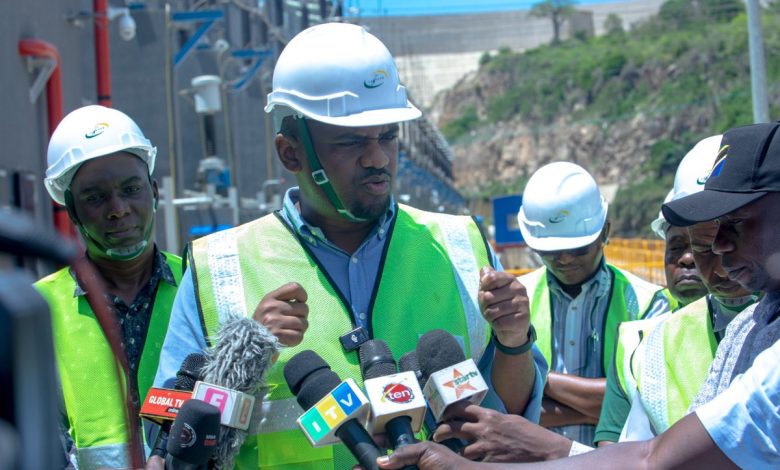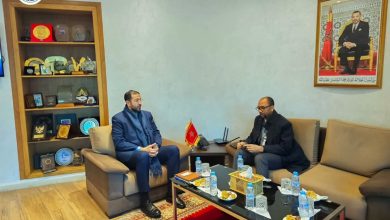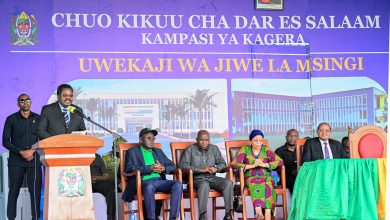Tanzania fast-tracks nuclear power

COAST REGION: THE Ministry of Energy is discussing nuclear power production plans with potential investors, marking a significant step in line with directives issued by President Samia Suluhu Hassan to diversify the nation’s energy mix.
The ministry is currently in the final stages of preliminary drafts regarding the nuclear initiative, after which broader stakeholder consultation meetings are scheduled to commence.
This was revealed yesterday by the Tanzania Electric Supply Company (TANESCO) Managing Director Lazaro Twange, when briefing Minister for Energy Deogratius Ndejembi, during a working visit to the Julius Nyerere Hydropower Project (JNHPP) in Coast Region.
In July this year, President Samia launched the Uranium Pilot Plant (MRP) in Namtumbo District, Ruvuma Region, a milestone that positions Tanzania to become a key player in uranium production. Uranium is a critical mineral for nuclear energy, cancer treatment and scientific research.
President Samia said the launch marked a pivotal moment in the nation’s path toward a modern, technology-driven economy built on local resources and scientific advancement.
“Today marks not just a celebration but the start of something transformative for our region and country,” she said.
She emphasised that uranium is a strategic resource, noting that Tanzania is among the few African nations with confirmed deposits.
With the Mkuju River area projected to produce up to 300,000 tonnes annually, Tanzania aims to become a regional hub for uranium exploration and processing.
Speaking yesterday during JNHPP visit, Minister Ndejembi reaffirmed the government’s commitment to ensuring reliable electricity for all Tanzanians.
He noted that the sixth-phase government under President Samia has made major investments to ensure that energy projects, including the JNHPP are completed as scheduled and capable of supplying power to the project area and the entire nation.
Mr Ndejembi, who toured the dam to assess its electricity generation, confirmed that the project is fully complete and generating 2,115 megawatts of electricity as planned.
He said the facility continues to benefit Tanzanians by ensuring steady and reliable power supply.
“Since generation began here, there have been significant improvements in electricity distribution, and the government is now focusing on constructing transmission lines to deliver power to more areas across the country,” he said.
He said that the government invested in JNHPP to eliminate power rationing, an issue he said has now been resolved.
ALSO READ: Ndejembi pushes PURA to fast-track oil, gas exploration efforts
Plans are also underway to build a substation that will receive and step-down electricity for distribution, particularly to the industrial zones of Mkuranga and Chalinze in Coast Region.
On the ongoing construction of the 400-kilovolt transmission line from Chalinze to Dodoma, Mr Ndejembi said the project is progressing well as part of the government’s efforts to ensure reliable electricity reaches the Central, Northern and Lake Zones.
He added that preparations are underway for another major transmission line from JNHPP to Mkuranga, which will supply the Mkuranga Industrial Zone and the city of Dar es Salaam.
The minister further said that the JNHPP guarantees Tanzania a stable electricity supply for over 100 years.
Meanwhile, TANESCO Managing Director Lazaro Twange said the government has invested 13.8tri/- in power projects, an amount he described as substantial and sufficient for current development needs.
He said TANESCO will continue strengthening infrastructure to meet growing electricity demand, including constructing transmission lines to industrial zones in the Coast Region to attract more investors.
Mr Twange said that of the 41 projects currently underway, six are for power generation while 35 involve transmission line construction.
He said that Tanzania now enjoys surplus electricity and no longer faces power rationing, with brief outages occurring only during essential maintenance.
He added that TANESCO is also expanding electricity access in industrial areas through major transmission projects from Mkuranga to Chalinze, Kibaha, and Kwala, where more than 3bn/- has been invested to ensure reliable power supply.
Mr Twange further noted progress on new renewable energy projects, including the 50-megawatt Kishapu solar project in Shinyanga and the 49.5-megawatt Malagarasi hydropower project in Kigoma, both of which will soon be connected to the national grid.
“Tanzania has sufficient electricity, and any investor requiring power for industrial or other activities is welcome. TANESCO is ready to provide service without any challenge of shortages,” he said.






A very crucial initiative for secured energy supply, a prerequisite for the industrialisation of our nation.